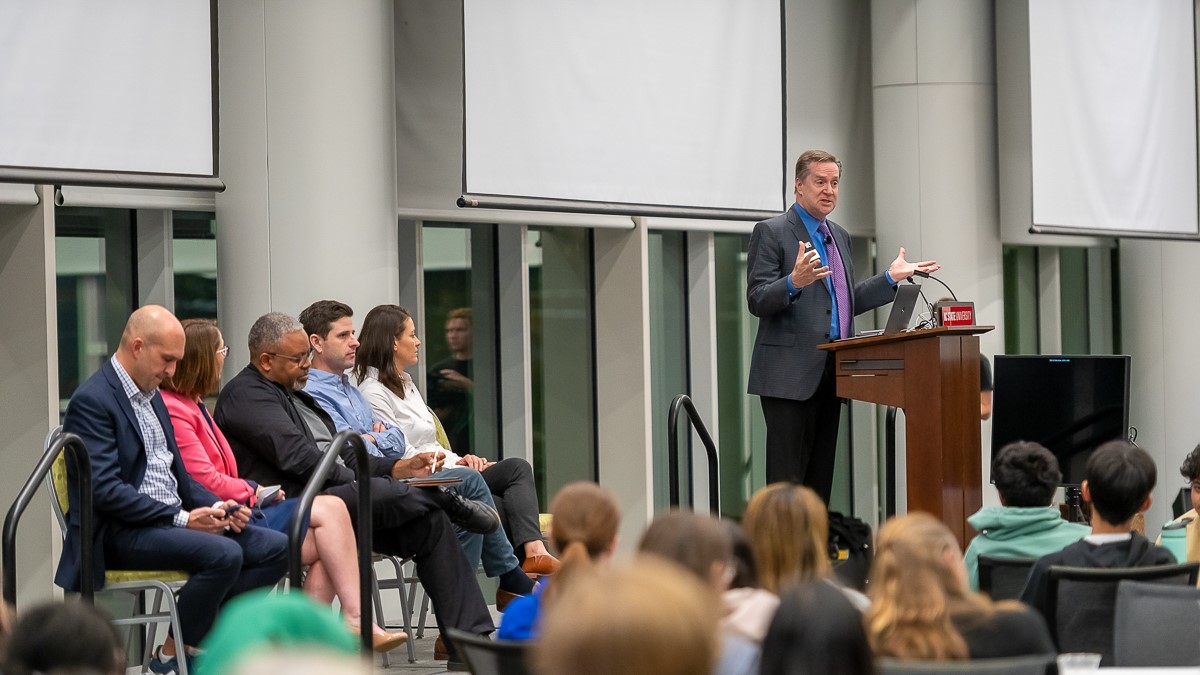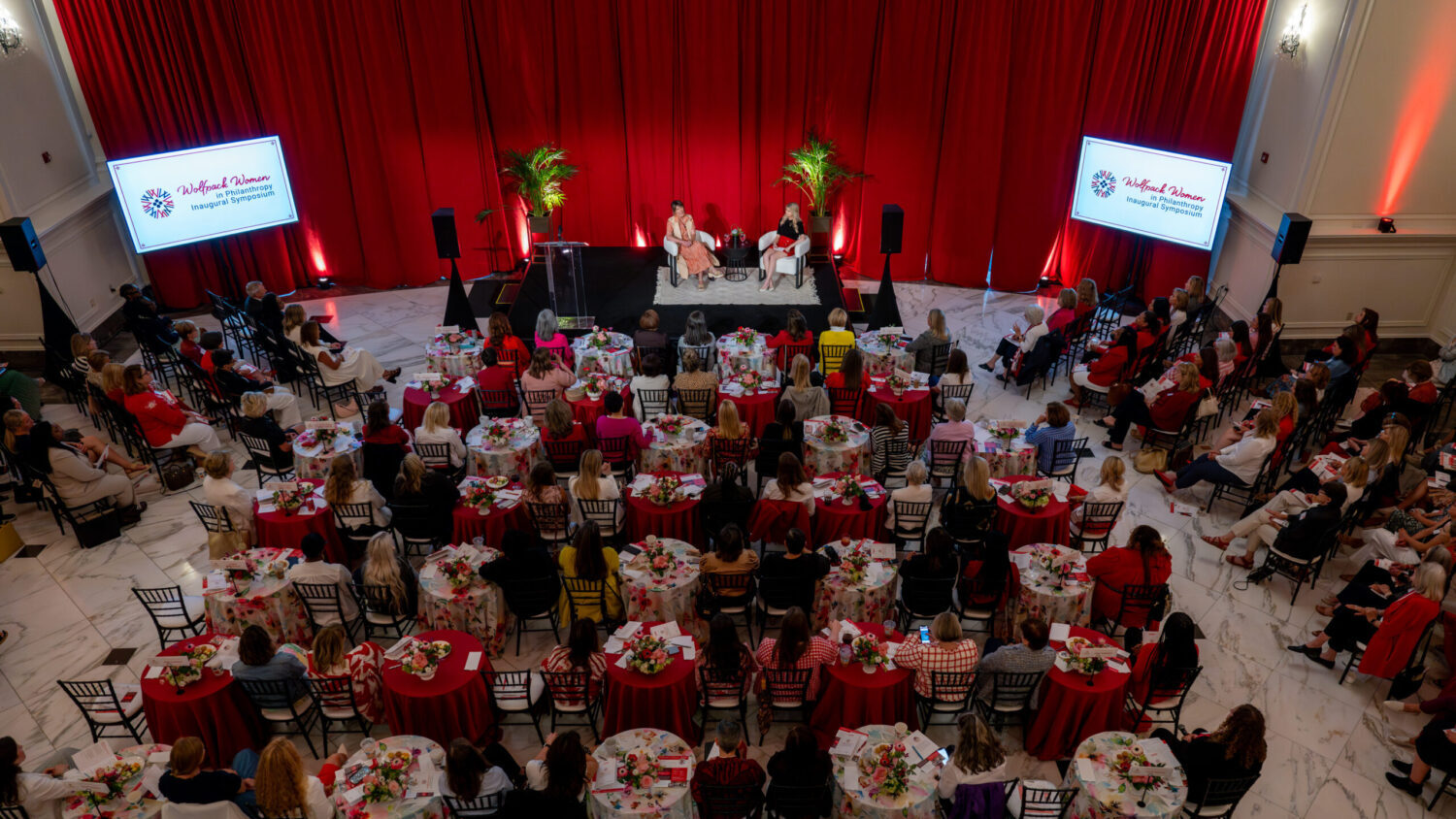Here’s the Latest: What’s Going on Inside that Belltower Fence?
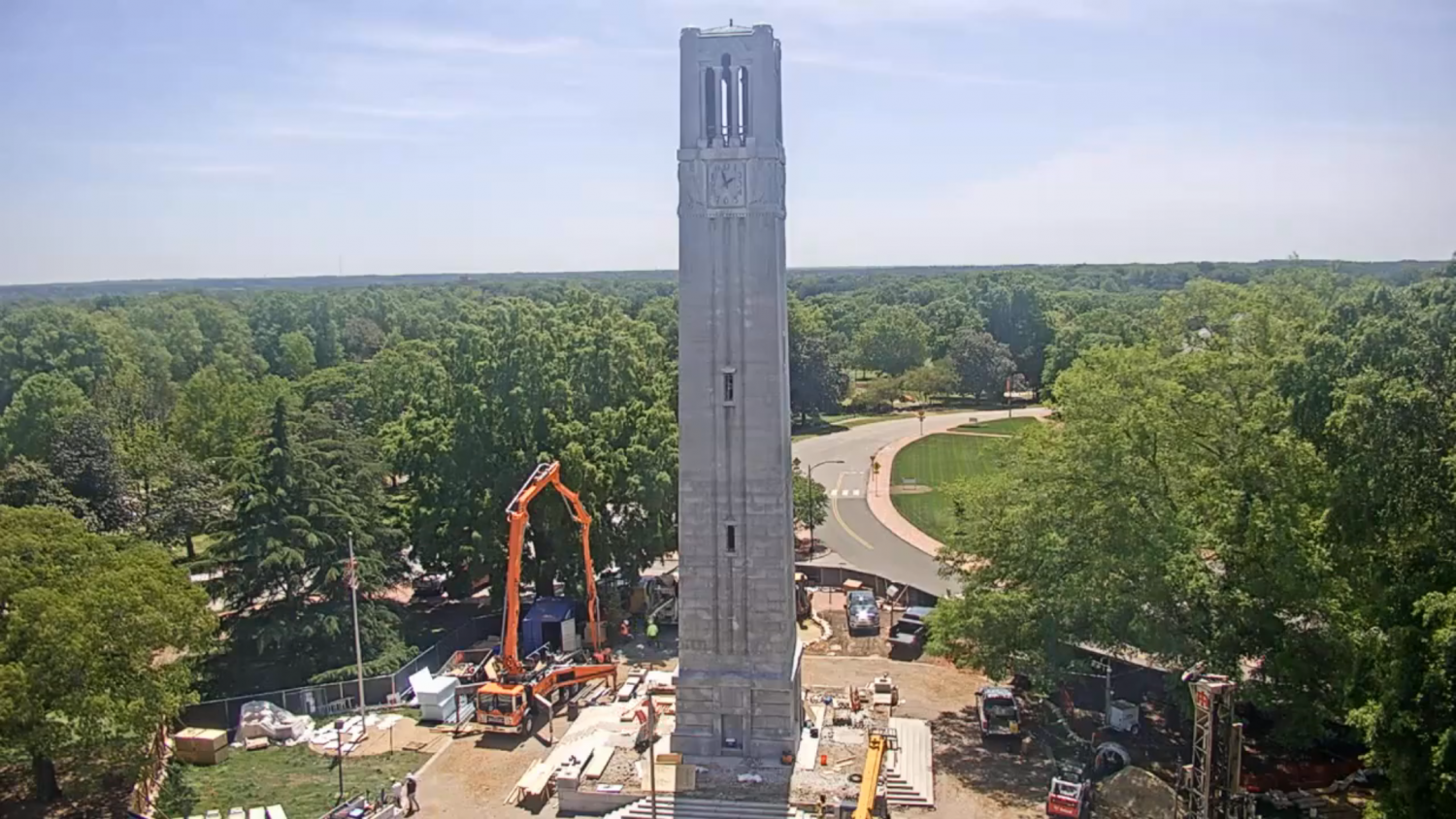
For the past two months, NC State’s campus has been largely still and quiet.
As the coronavirus pandemic grew more serious, few students returned after spring break, instruction moved online, and most staff and faculty members began working from home.
At campus’ northeast corner, though, sounds like pumping drills, whirring power tools, clanging steel and beeping trucks remain commonplace. Construction has continued on the Memorial Belltower completion and restoration project, at a slow-but-steady pace with adherence to applicable COVID-19 government guidelines.
Over the past week or two, a few members of the class of 2020 have stopped by for photos in their caps and gowns just outside the barriers — a reminder of what campus typically looks like in late spring.
“We have been working on many aspects of the project for the past few weeks, and the work is moving along well,” said Michael Hardman, senior project manager with New Atlantic Contracting Inc. “It’s exciting to be at the site and to see the progress.”
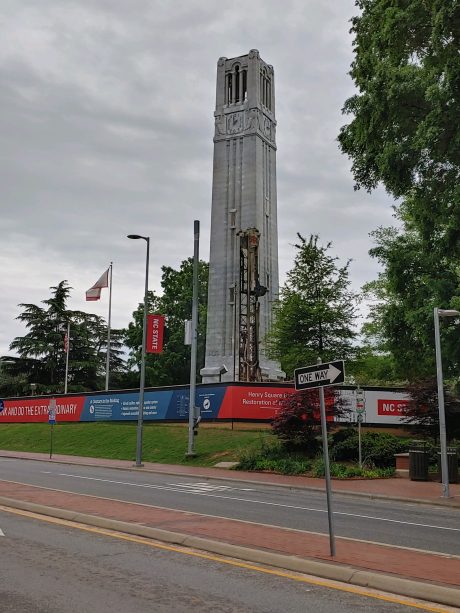
The first project’s first phase, exterior restoration of the tower, took place during the fall 2019 semester. Impressive, extensive scaffolding surrounded the structure then, and workers were clearly visible moving up and down the levels carefully cleaning historic masonry.
Much of the action thus far in 2020 isn’t as obvious to passersby (and is less glamorous than a surface facial). A lot of recent work has moved inside the Belltower, in preparation for the addition of the 55-bell carillon that will fill the belfry and for the new clavier playing cabin being built just below clock level.
There’s also progress on project elements such as mitigation of water infiltration, upgraded wiring and addition of an HVAC system. Five geothermal wells have been drilled for the latter, for example.
Directional boring has been completed, for the installation of wiring to support upgraded and more efficient lighting, electricity, security and data. (It eventually will be possible to play the new bells electronically from a keyboard in Holladay Hall, as well as manually while seated in the playing cabin).
Hundreds of cobblestones have been carefully removed from the upper plinth surface and placed in storage containers. Workers will remove the concrete pad that was below them in order to replace old granular fill, improving drainage and keeping moisture out of the tower.
The recent headliner at the site: the start of work to install winding interior stairs between the Shrine Room and the new playing cabin. The project includes both restoration of the Shrine Room and its memorial plaque, which has suffered years of water damage, and completion of details like lighting to bring the space closer to architect William Henry Deacy’s original vision. (The tower, just as it never received bells, has never had its planned stairs, only an interior metal ladder to provide upward access for maintenance.)
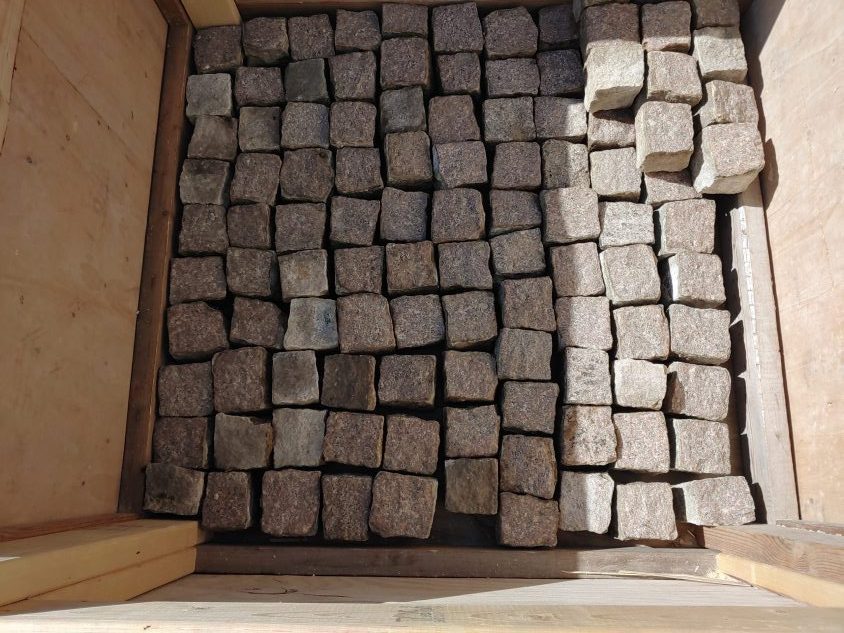
Yes, this stair-building process involves workers in safety harnesses that are secured inside near the tower’s top.
And no, your eyes don’t deceive you. The crew has installed temporary Plexiglas inside the tower windows, as well as plywood panels in various areas from time to time, to protect the structure and features like the Shrine Room door during ongoing work.
The old, basic Shrine Room ceiling was demolished and removed, with a new oculus level slab installed. The new concrete slab for the playing cabin floor has been added too.
“Everyone knows about the bells coming, but there are a lot of other parts of this project,” Mark Michaelson, project manager with NC State’s Capital Project Management division. “It’s an honor for everyone working on the Belltower to make sure it’s cared for and can be an important part of NC State for a long time.”
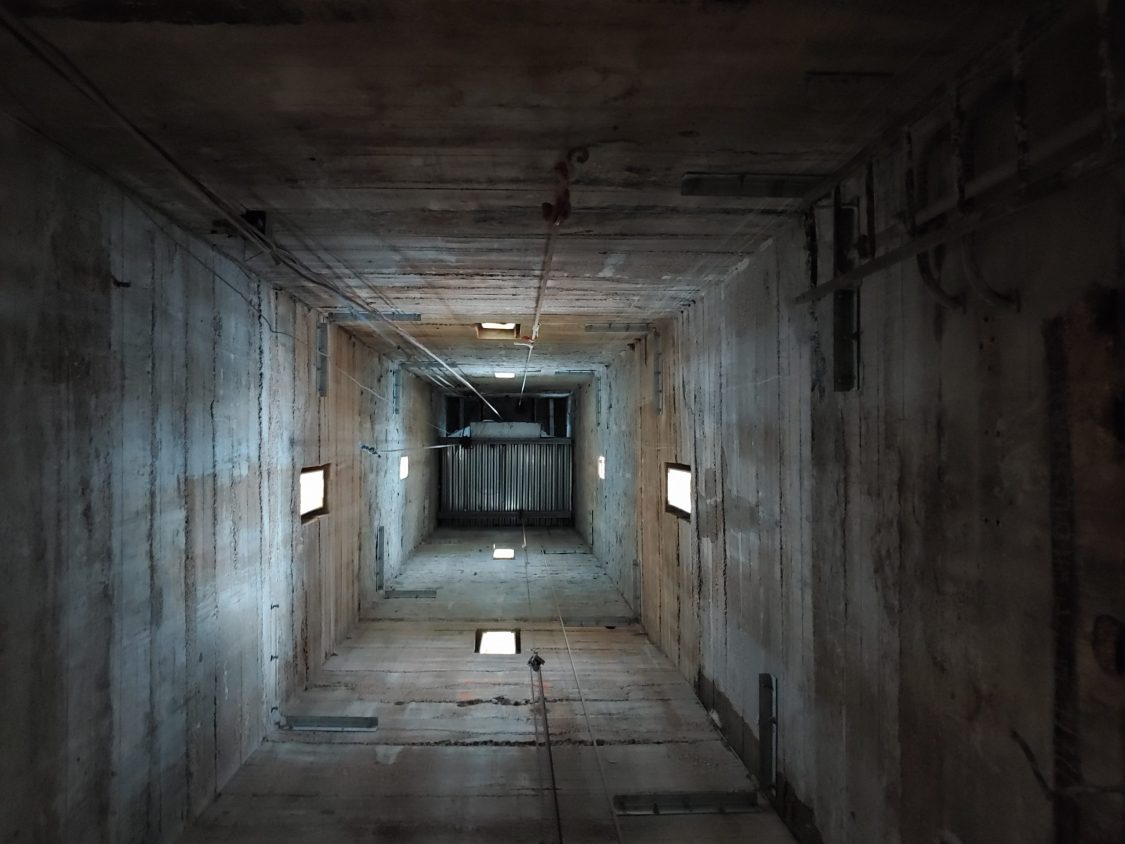
Here are a few other tasks that have been completed in the past few months:
- Removal of old lights and speakers from the belfry
- Removal of the rusting mechanical clock works, which will be replaced by a digital system. (Note that the clocks will look the same on the outside. And that many salvaged materials from the project will be stored for reuse or preservation through the university archives.)
- Erection of structural steel beams for the new belfry slab, to support the bell system
- Cuts made in the belfry floor for skylights into the new carillon playing cabin
- Demolition of the existing clock level slab, opening the area below (the future upper part of the playing cabin) to the belfry floor and its skylights
- Installation of new playing cabin steel and pouring of this new room’s topping slab at the belfry level as well as its floor slab
- Approval of final design details, such as the design of the new torchieres — the four exterior lighting fixtures on the corners of the tower plinth — which will reflect the era of the tower’s original design. These new fixtures, which will retain the metal bases of the old ones (as historical materials are being maintained to the greatest possible extent), will have white lighting capability along with red.
- Waterproofing of the belfry slab
- Removal of granite benches on the plinth for repair and reinstallation later
This summer, the top will come off the Belltower, for repairs and for the installation of the carillon to begin.
The project, part of the university’s Think and Do the Extraordinary Campaign, also includes renovation of the surrounding space into a more accessible Henry Square, named for lead donors Bill and Frances Henry. All of the work is scheduled to be completed around the end of 2020, with a rededication event planned for next spring.
The Belltower’s cornerstone was laid 1921, and it was erected to honor alumni who died as a result of military service in World War I. Read much more about the past, present and future of this beloved site on our Legend in Stone page. Watch a fly-through visualization of how the Belltower site will look when completed and restored. (Check out those interior stairs!)
- Categories:
